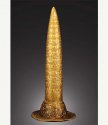re: F-35 Joint Strike Fighter Thread
Actually the combat edge, upper pressure vest is the primary culprit, the the release valve is failing and won't allow it to deflate when the Gs decrease, staying fully inflated it is like an elephant sitting on your chest. The Raptor will pull and maintain 9.5 gs in a sustained turn, it is at the upper limits of human physiology. [Please refrain from relating your RPV nightmares, I really don't want my head to explode with one more goof-head telling me about the joys of unmanned aircraft]. The Raptor is, and will likely remain the only true fifth gen aircraft in the world. Fifth gen was defined as Supermanueverable, Supercruise, Stealth, Integrated Combat Systems, able to network with other platforms, Advance Radar and Weapons systems. The F-35 is "not" supermanueverable, able to supercruise, and not nearly as stealthy as the Raptor, although it does employ L/O technology, and its Integrated Combat Systems, and ability to network with other combat systems is mind boggleing. The Raptors emergency O2 system will be fully automated and those systems have been ordered installed "Post Haste".
I agree...and I think they can do that. it seem,s to me that the issue with the impact to the pilot and flight crews was not talked about or heard of for several years and it is only in the last few years it has been an issue. Perhaps some upgrade introduced the problem...it is wierd that it is also impacting the mainteance crews.
There may be merit to some of the exotic materials being the root...but I am confidant they will address the issue.
I know this. When the pilots are healthy nothing else can touch it.
Actually the combat edge, upper pressure vest is the primary culprit, the the release valve is failing and won't allow it to deflate when the Gs decrease, staying fully inflated it is like an elephant sitting on your chest. The Raptor will pull and maintain 9.5 gs in a sustained turn, it is at the upper limits of human physiology. [Please refrain from relating your RPV nightmares, I really don't want my head to explode with one more goof-head telling me about the joys of unmanned aircraft]. The Raptor is, and will likely remain the only true fifth gen aircraft in the world. Fifth gen was defined as Supermanueverable, Supercruise, Stealth, Integrated Combat Systems, able to network with other platforms, Advance Radar and Weapons systems. The F-35 is "not" supermanueverable, able to supercruise, and not nearly as stealthy as the Raptor, although it does employ L/O technology, and its Integrated Combat Systems, and ability to network with other combat systems is mind boggleing. The Raptors emergency O2 system will be fully automated and those systems have been ordered installed "Post Haste".



